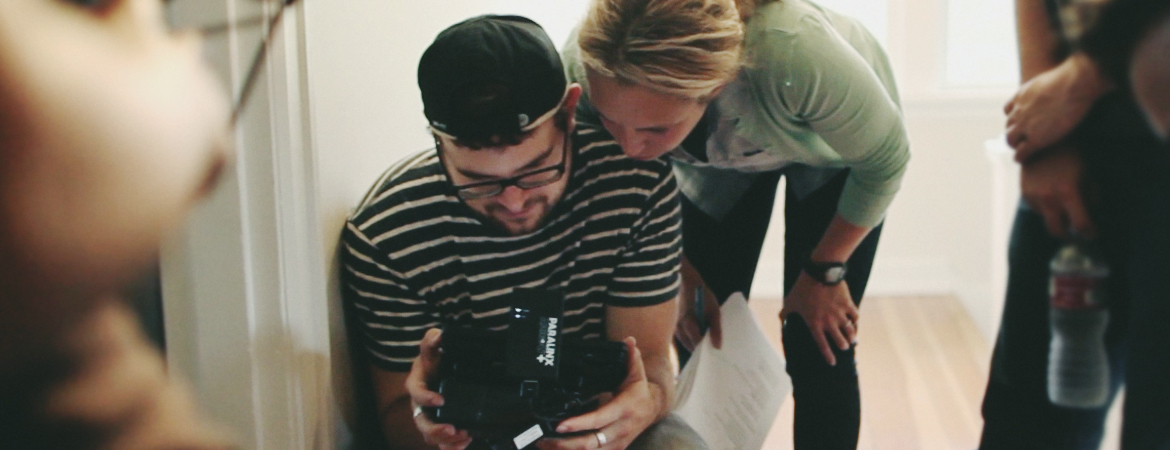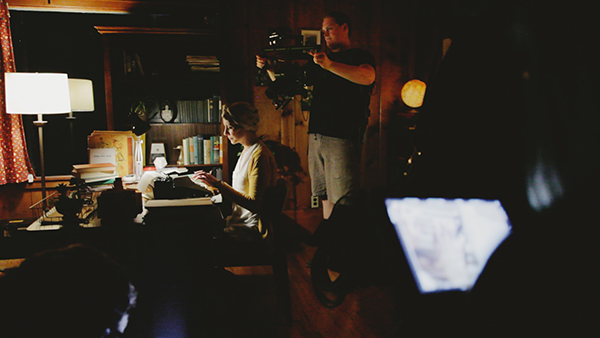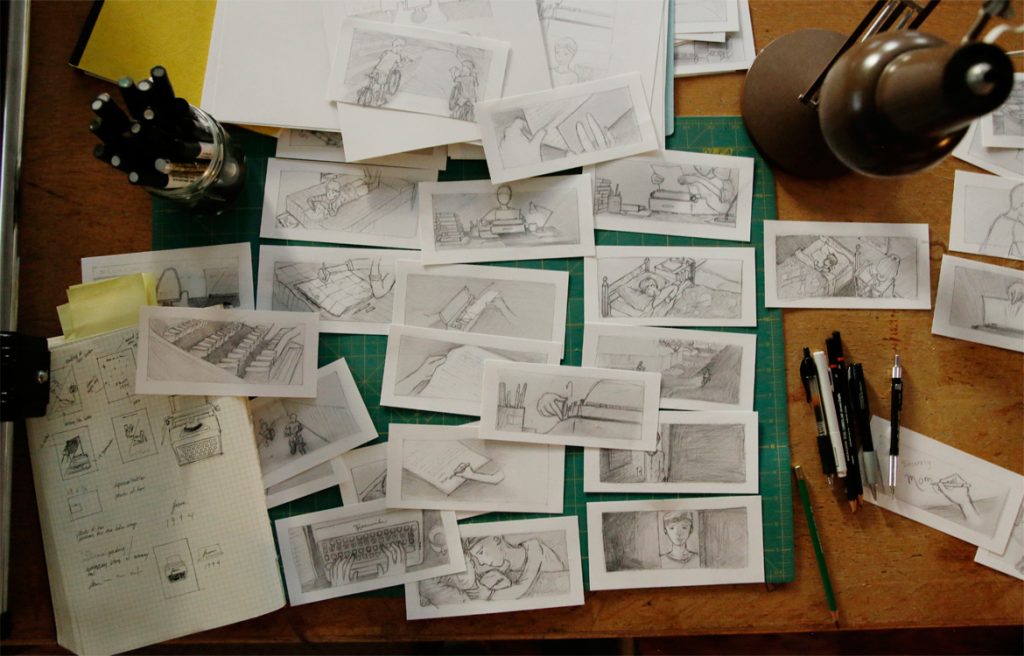Seattleites Casey Warren and Danielle Krieger are the creative duo behind the production company Mindcastle and the new film From 1994 (one the first ever to be shot with the MōVI and Alexa M together). And really, “creative duo” doesn’t do them justice. These two finish each other’s sentences. After meeting in high school, they started their own photography company to avoid getting summer jobs. Since then, they’ve gone on to create videos for the likes of ESPN, HBO, and Disney. And on top of all of that, they’re an absolute delight to chat with. Here is our conversation with Casey Warren and Danielle Krieger.
WRITE IT DOWN
So how did the idea for From 1994 come about?
DK: Casey’s mom passed away—[to Casey] when you were in eighth grade?
CW: I was 14.
DK: And his dad passed away when we were in college. After his dad passed away, everything was put into a storage locker. For Christmas or Casey’s birthday one year, his aunt framed a letter that Casey’s mom had written to him before she passed away, and she gave it to Casey. Casey’s very humble and doesn’t like to talk about anything, so he didn’t want to put it up. And I was like, “This is the coolest letter I’ve ever read.” I didn’t get to meet Casey’s mom, so it provided a little bit of insight into her because you can hear her voice through the writing. But it was also gave me some insight into Casey as a kid. So I kept pulling out that letter and putting it on the counter, and Casey kept hiding it.
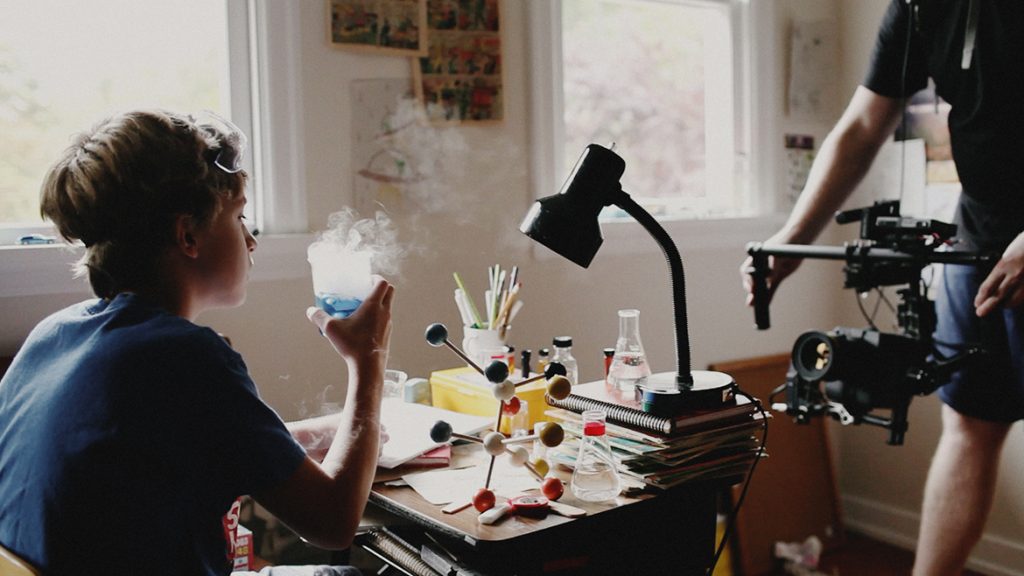
CW: She kept saying, “We need to make something of this letter.” And I was like, “I don’t know what to do with it.”
DK: We’re always writing. You will never see Casey without a large notebook, like a Moleskine notebook. He probably has 30 of them filled with ideas.
Do you guys have a specific writing routine, or are you always jotting down ideas?
CW: What I try to do is keep a notebook as a working log of everything I think of. So right now there’s a line across the page that says, “Musicbed Interview” and then ideas of what I want to talk about.
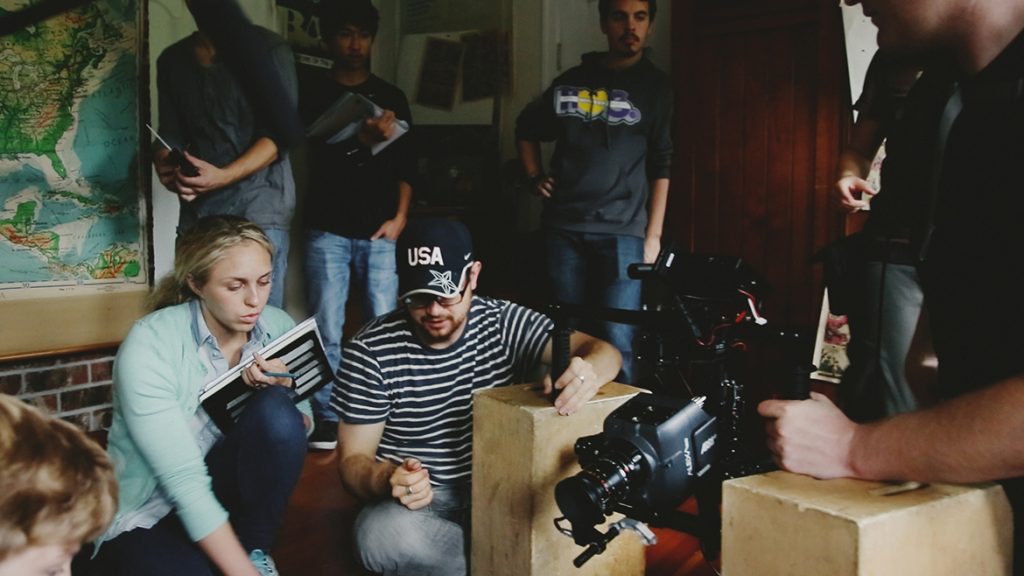
So you carry it with you all the time?
CW: Yeah, yeah. And the problem is—
DK: He lost it one once, and it was like an emergency. We had to go back to the airport.
CW: All of my ideas were in there! She said, “They’re not in your head?” And I said, “I forget them easily!”
So do you carry it in a satchel or something?
CW: I just hold it.
DK: He just holds it.
You just hold it?
CW: That’s the problem. It’s very easy to just set it down somewhere.
DK: He takes it everywhere—to dinners, on planes, to the park on walks.
CW: I used to not do that. But I always have ideas, so I’d be writing them on the backs of receipts and putting them in my wallet. They’d just get lost. I tried the whole app on the iPhone thing, but I write so much quicker with my pen.
DK: There are also doodles and drawings in it, too.
CW: Yeah, yeah.
So it’s always Moleskines? That’s my last question about the notebook, I promise.
CW: Yeah, Moleskines. The black ones. The full 11 by 17s.
Cool. So, okay, back to the film.
CW: So anyway, this letter my mom wrote was actually one of many letters that we discovered. Boxes of letters.
DK: She did the same thing Casey does. There are notebooks filled with poem after poem.
CW: She got paid to write for a newspaper, and she did photojournalism. But her passion was poetry. Every night, at least from what I can tell from reading the letters, she sat down and wrote kind of a journal. But it was a journal to me. They document my whole childhood. But the interesting thing about this one letter was that it was the last one we could find. I can’t find any others that go beyond it. It’s also interesting because, unlike the other ones, this one says, “Right now you’re five, and I believe in the future you’ll be like this, and you’ll be like this. I hope you still do this in the future.” I read it and thought, I am doing all of these things right now.
DK: It was kind of like her wish for his future.
So how did you turn that into a film? Was it a collaborative effort?
CW: Danielle came up with the idea of making this letter into a story. And I was like, it’s a really cool letter, but I don’t know how to make a story about it.
DK: So the basis of getting this to production started around August. Tabb Firchau from Freefly contacted us and wanted us to do a behind-the-scenes thing using the MōVI and the Arri Alexa M together.
CW: We’d worked with him before. A couple of years ago, we hired him to shoot some awesome stuff for us in Alaska for a commercial we were shooting for Canon. In the two years since we last worked with him, he’d completely expanded his company and was making just amazing stuff. And he lived ten minutes away from us. So now we go there all the time. Super-cool guy. Tabb said, “Hey, I’m really interested in getting you guys on board to make a behind-the-scenes film.” And we said, “Oh, sounds awesome!” Then we started tossing around ideas for what the film would be.
DK: We wanted to really showcase the MōVI and how we’d use it on a film set. Really test it out in that way. So we wanted to come up with some sort of story to shoot behind the scenes. We threw around a bunch of ideas, and then I said, “Why don’t we just do the story about the letter—we’ve had it for so long, why don’t we do it now?”
Did the MōVI affect the way the film looks?
CW: Part of the reason why I bring notebooks wherever I go is because I get a lot of ideas in the car. I think everyone gets ideas in their own way. For me, a lot of my ideas for scenes involve movement.
When you look at a tool, you have to boil it down to the core of filmmaking: It’s telling a story in the way you imagined it. The MōVI really fits into how I imagine things and how I want stories to be told. It goes beyond being just a piece of technology to being something that really helps you tell the scene or story that you have in your head.
I mean, 99 percent of the film is shot with a MōVI. You can do such small movements, but they look so amazing. From moving just two inches, you can get an amazing dynamic shot. It really helped us tell the story.
In any type of filmmaking, all of your camera moves should be fueled by the action of the actor. A lot of our story revolves around this mother writing a letter.
So action-wise, she wasn’t moving. But emotion-wise, her thoughts were moving. So that’s the movement that fueled our film. That’s one of those sort of “why” moments. When someone says, “Why did you use the MōVI in the writing scene?” our answer is that the scene is about her thoughts, her ideas, and her storytelling—her crafting of this letter.
DK: And since we were filming in really small spaces, we wouldn’t have been able to get a huge piece of equipment in there. So having something relatively small and mobile so a person could move around and get that variety of shots without having to set up something different was really efficient.
CW: In the end, every shot I had in mind and described was achieved.
Was it hard working on a project that hit so close to home?
CW: The project is basically the same thing my mom gave to me. I want to give this film to my kids or to my friends. This is a part of my life. It’s something I can someday wrap up in my own time capsule.
DK: We wanted to do it just for ourselves. That was the first step in making it.
How do you guys work together? Do you have a certain process?
DK: We’ve been working together since we were 16 years old, so it’s become second nature to us. I would say we work well together because we are very different. Casey’s more focused on little details, the technical stuff. I’m more involved in the big picture and overall idea. For instance, I came up with the concept for From 1994, but Casey was able to take that and—
CW: Turn it into a script.
DK: Turn it into a script because he is very detailed oriented. He has more patience for that. We are able to fill each other’s gaps. And just from working together for such a long time, we’ve kind of gotten into a rhythm of doing it that way.
That’s awesome. All right, a few random questions: What are you guys particularly geeked out about right now? Like, are you excited about a certain movie or any books that you’re reading?
CW: Danielle knows my answer.
DK: Casey’s been obsessed with Gravity. He wanted to see it multiple times. But editing our film had to come first, so he could not go see it multiple times.
CW: Gravity was shot on the same camera that we shot our film on, the Arri Alexa. It’s cool to see—
DK: What it can do.
CW: Yeah, but beyond all of the special effects, I think the best thing about Gravity is that it is a very simple story. Simple stories told well are better than complex stories told in a mediocre way.
DK: When you’re writing scripts and stuff, sometimes you think you need to add more dialogue or more stuff. But watching Gravity and other films that are very simple is inspiring. You don’t have to put a lot of stuff in your film to tell a good story. You can just let the actions and emotions and their motivation get it there, as long as the story comes across to people.
CW: I was reading interviews with Alfonso Cuarón, the director of Gravity, and he said many, many times the studio kept telling him, “You’ve got to show Houston, you’ve got to show other people, you’ve got to show [Ryan Stone’s] memories of when her kid was there,” and all that. And he kept saying, “No. I have this vision.”
I once heard J. J. Abrams say the best advice he ever got was, “Your own ideas are just as good as everyone else’s.” A lot of times Danielle and I will write things down, and it’s hard to have confidence in your ideas. You don’t know if people are going to like them. It’s especially hard with Twitter and Instagram. People just seem so confident. But the reality is that—
DK: You’re going to make it sound like we don’t have any confidence!
CW: No, no, it’s just that—
DK: Everyone goes through the same thing.
CW: Yeah.
DK: Nobody thinks their stuff is perfect.
Is there any music you guys have been loving lately?
CW: Primarily, everything we’re listening to is actually on Musicbed. Our top people right now are Tony Anderson, Dexter Britain, who’s awesome, and Carly Comando’s amazing piano music. Danielle has some favorites too.
DK: Salomon.
CW: Oh yeah, Salomon Ligthelm.
DK: Bradford Nyght.
CW: Yeah, Bradford Nyght. Just lots of good stuff.
DK: We tend to like the cinematic genre.
Any books?
DK: One of my favorite books is Start With Why: How Great Leaders Inspire Everyone to Take Action by Simon Sinek
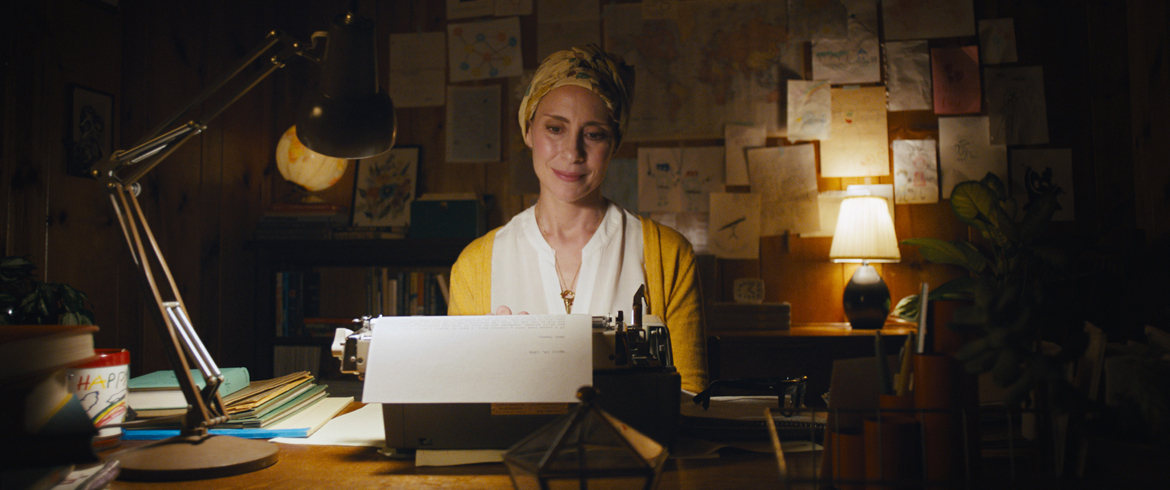
CW: Yes. That one is awesome.
DK: That book really helped me understand the question of why. Like, for instance, you’re in love with some opening sequence of an edit, but if it doesn’t further your story, why does it need to be in there? Is there a purpose? You can apply the question of why to anything. Whenever we create new work, we break it up into little sections and ask ourselves why for each thing. It really helps bring out more originality, and it helps us accentuate our voice and vision.
CW: When we wrote the script for From 1994, we initially asked ourselves the basic question of why do we even want to make the film? And the answer is we wanted to create a piece of art that was a legacy for my mom, her writing, and what she did. But it’s also just an expression of what we do. I would feel empty if we didn’t make something out of that.















































































